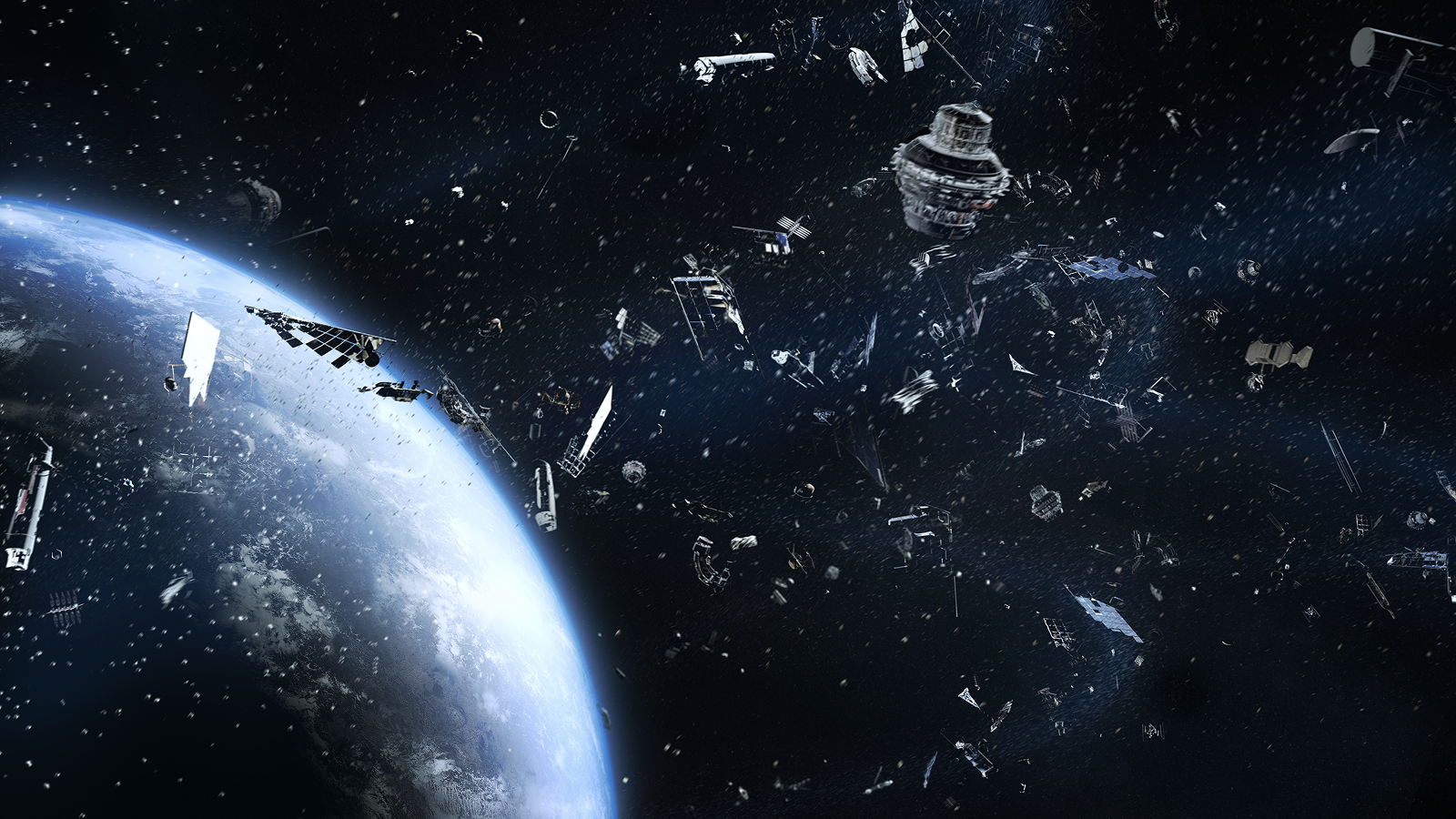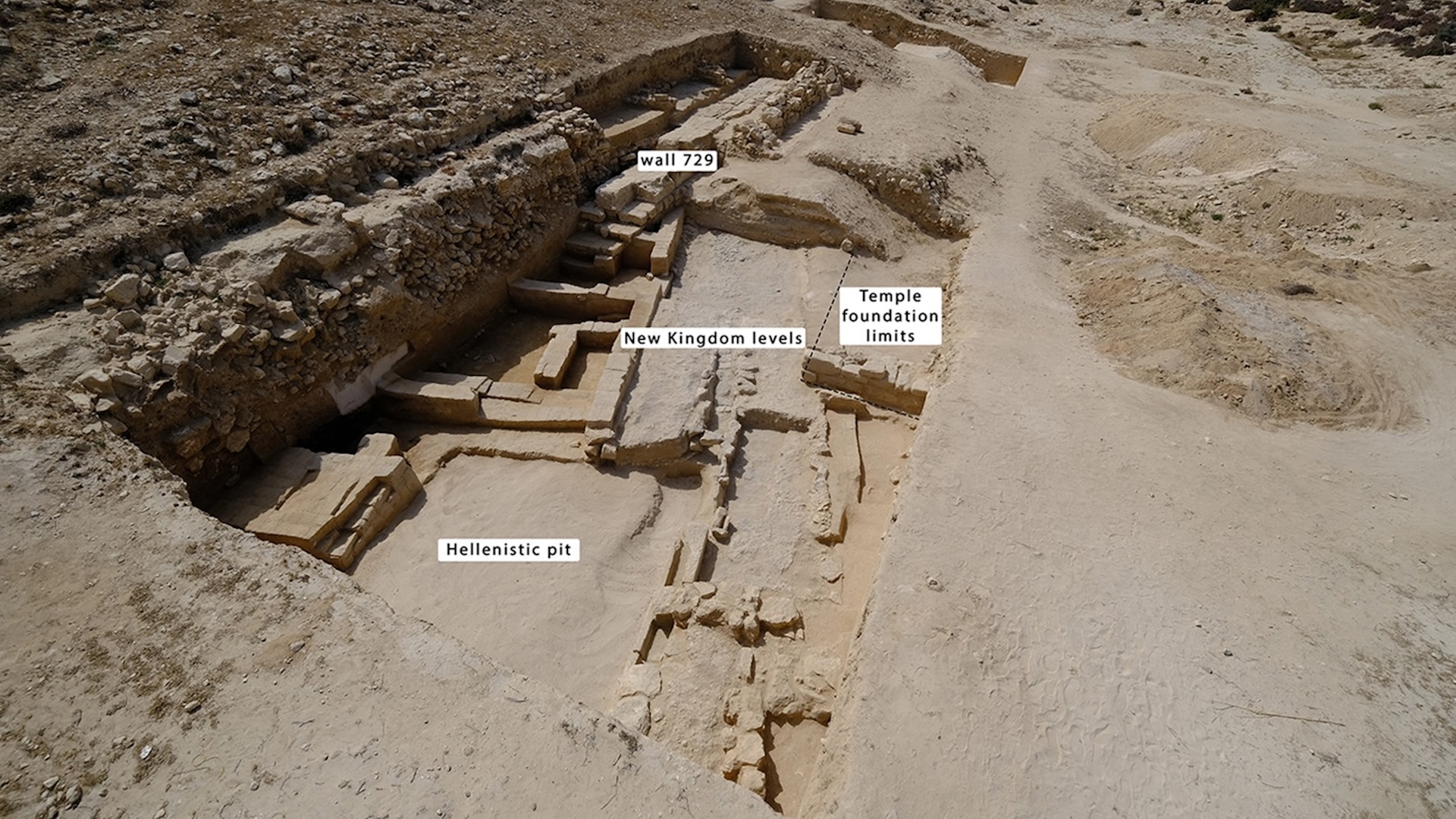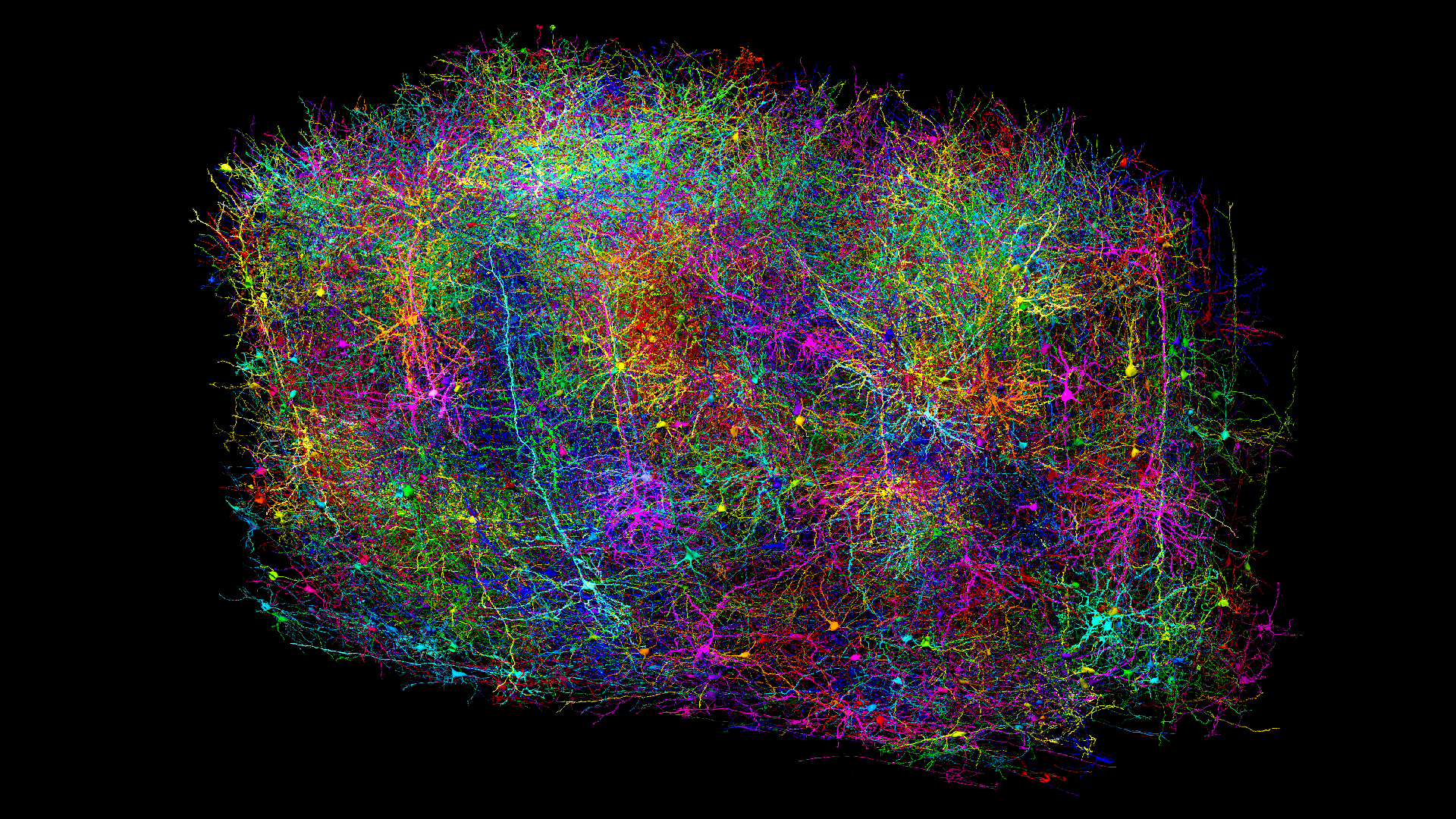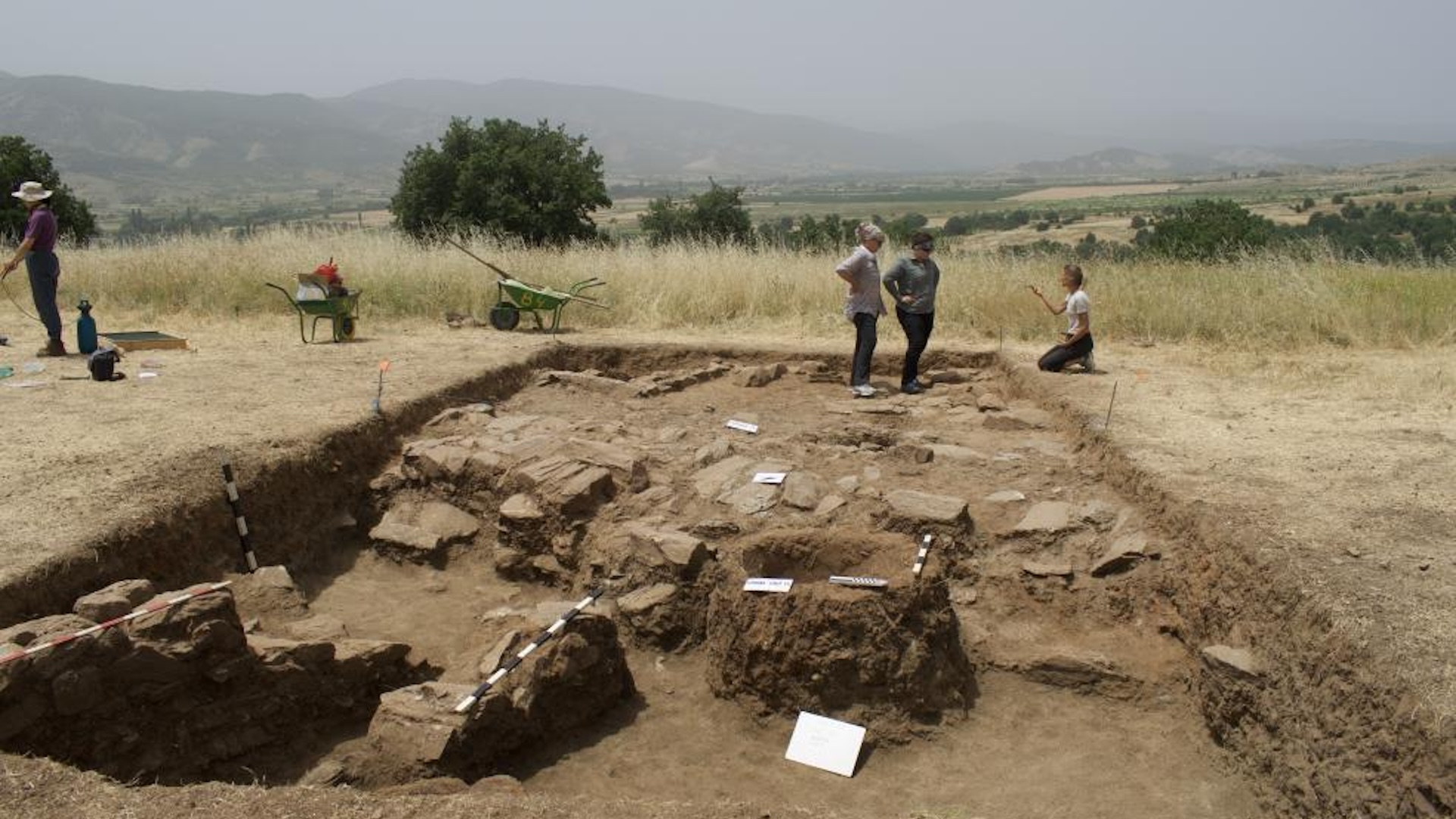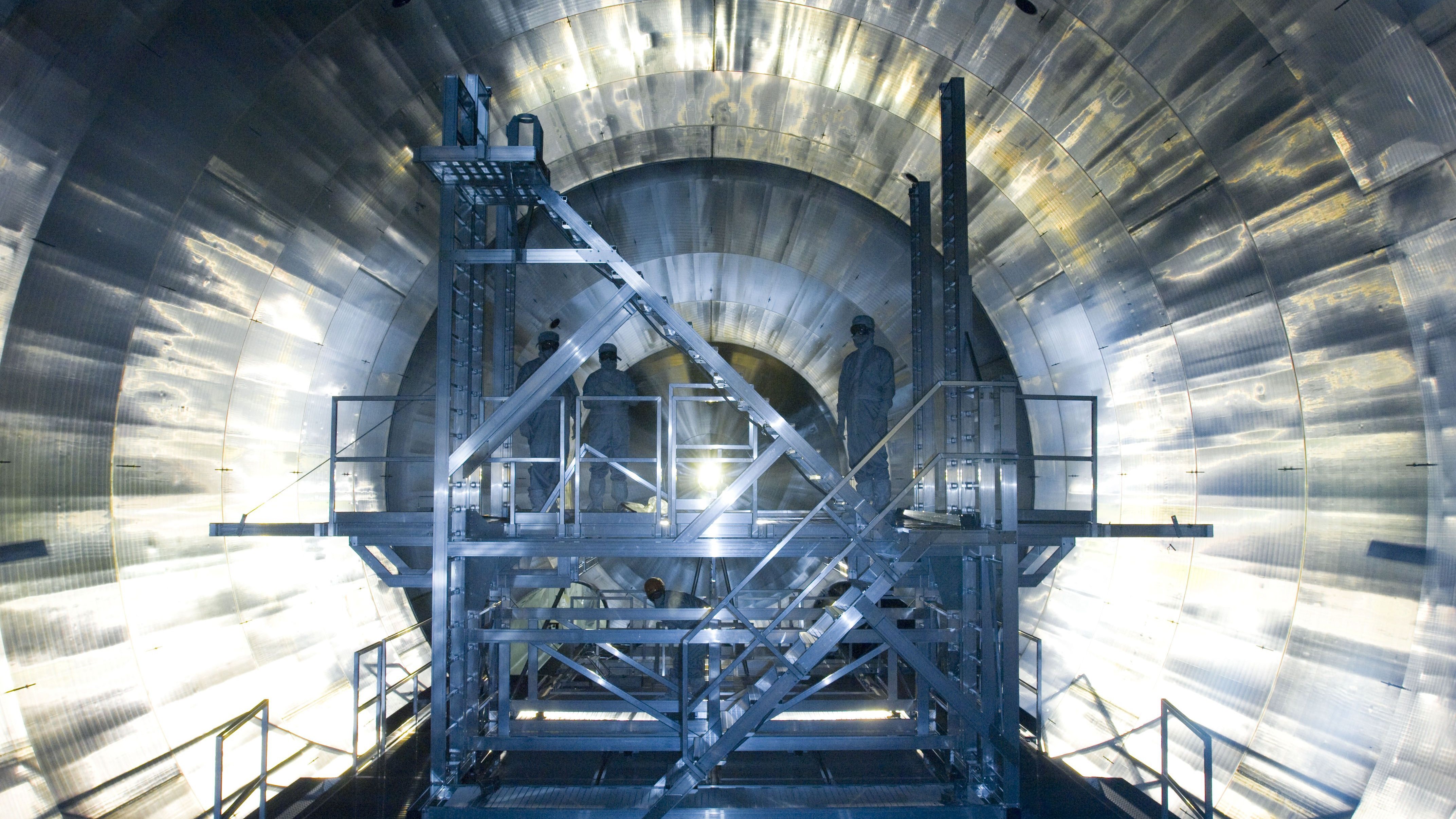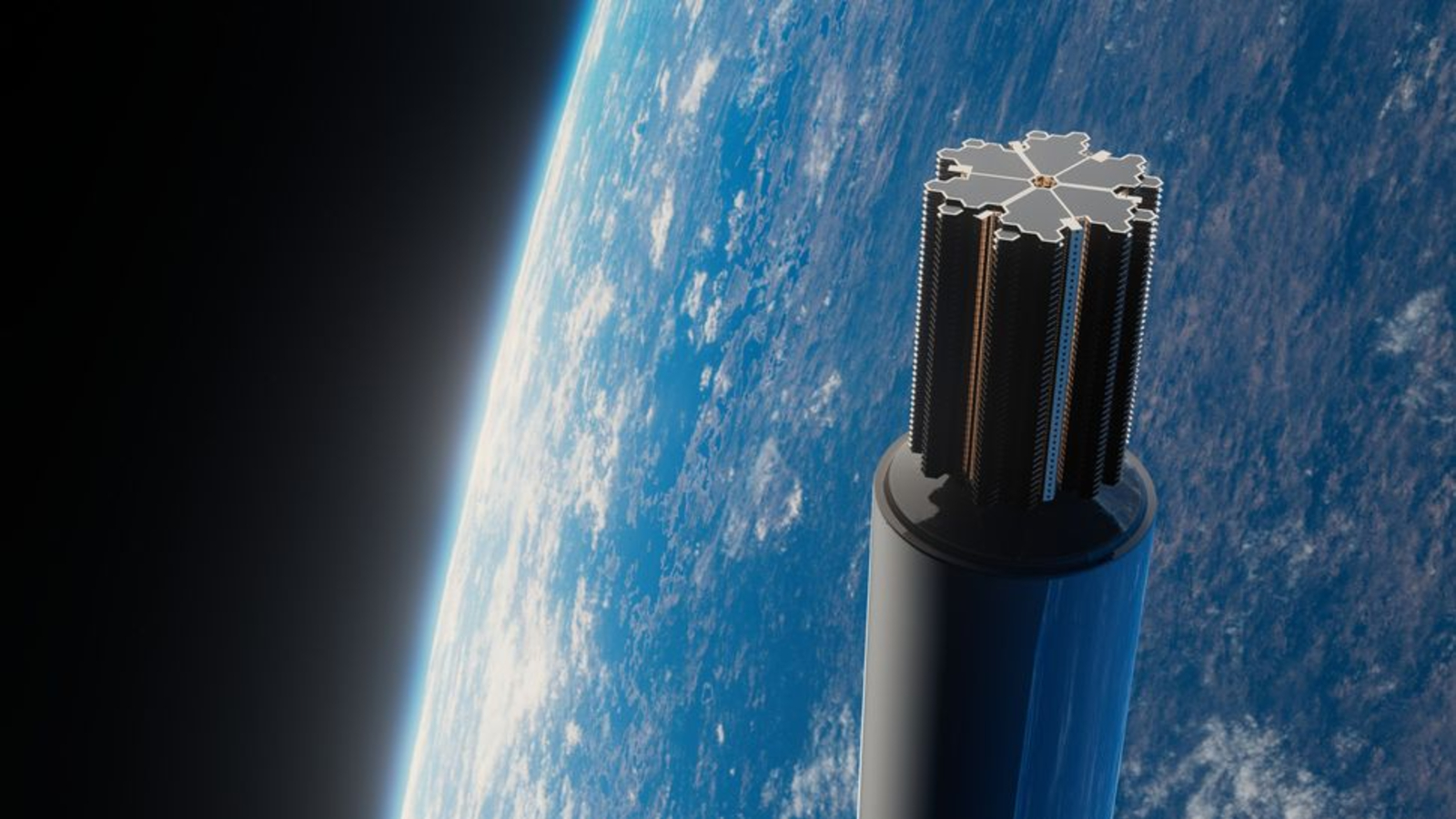Record-breaking 'dead' galaxy discovered by JWST lived fast and died young in the early universe
The most distant and earliest "dead" massive galaxy ever seen shows some galaxies lived fast and died young shortly after the Big Bang.
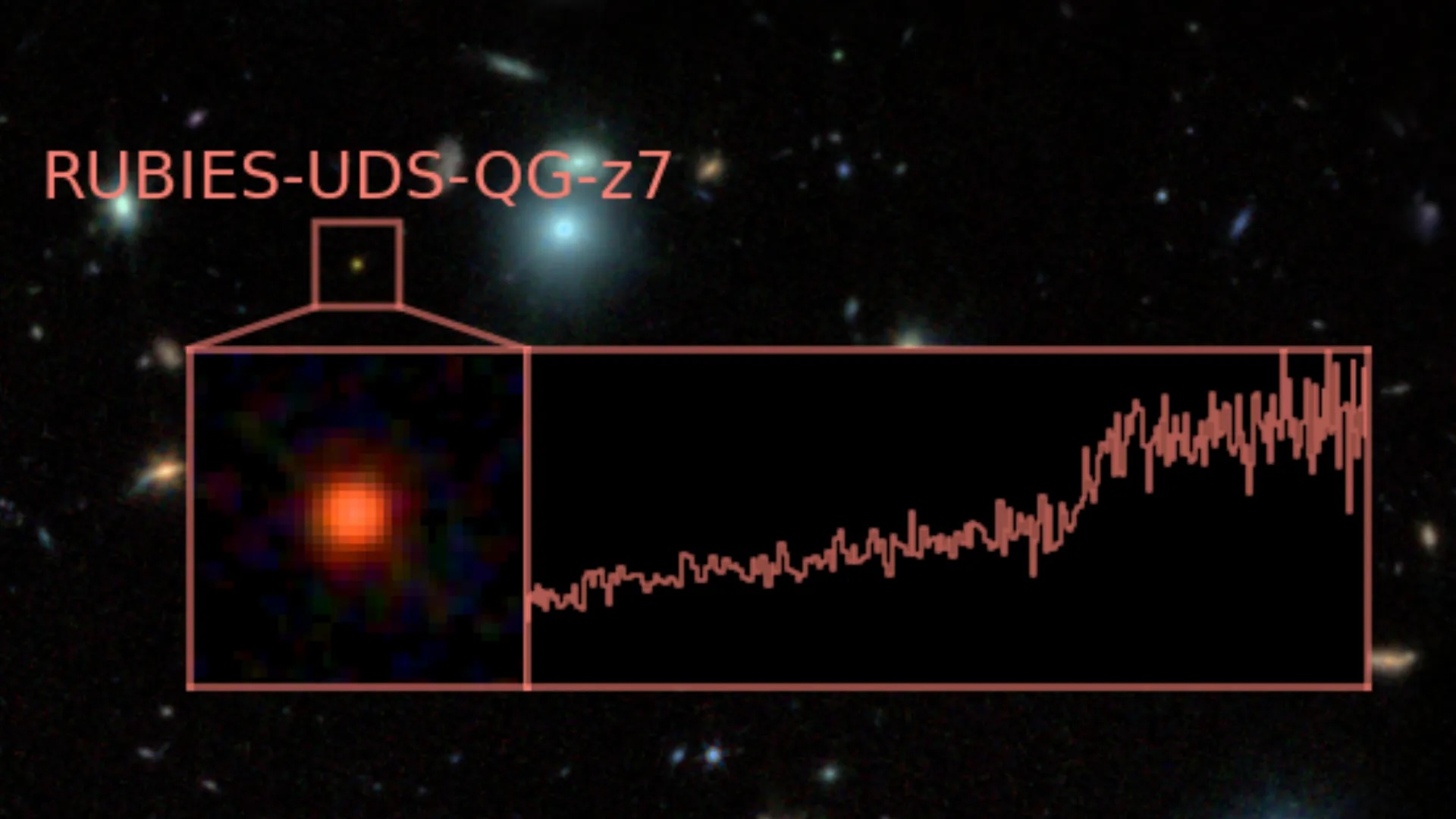
Using the James Webb Space Telescope (JWST), astronomers have found the most distant (and thus the earliest) massive "dead" galaxy to date. The discovery suggests that galaxies were "dying" much earlier in the universe than previously believed.
"Death" for a galaxy refers to the slowing down, or even halting, of intense star formation, which stops a galaxy from growing. Such dead galaxies are more formally referred to as being "quiescent," or "quenched." Early dead galaxies seen by the JWST have been referred to as "red and dead" galaxies due to their lack of massive hot young blue stars and their abundance of old small red stars. They have also been dubbed "Little Red Dots" due to their appearance in JWST images.
Light from this new record-breaking galaxy, designated RUBIES-UDS-QG-z7, has been traveling to us for 13 billion years, meaning the JWST saw it as it was just 700 million years after the Big Bang. That makes it the first so-called massive quiescent galaxy (MQG) seen in the infancy of the 13.8 billion-year-old universe.
"We discovered a galaxy which formed 15 billion times the mass of the sun in stars and then stopped forming stars before the universe was only 700 million years old," team member Andrea Weibel of the University of Geneva (UNIGE) Department of Astronomy told Space.com. "This makes RUBIES-UDS-QG-z7 the most distant massive quiescent galaxy known to date."
The discovery may challenge our models of how galaxies evolve — and eventually stop growing — due to the cessation of star birth.
"The observation implies that some galaxies have stopped forming stars when the universe was only 700 million years old," Weibel said. "So far, models and simulations contain very few such objects, more than 100 times fewer than the existence of RUBIES-UDS-QG-z7 suggests. This means that the physical processes and mechanisms that regulate star formation and its termination in galaxies in the early universe may have to be revisited."
Live fast; die young.
Quiescent galaxies are common immediately around the Milky Way. That's expected because the further away we look, the further back in time we are traveling. Thus, local massive galaxies have had a lot of time to start forming stars, grow to tremendous masses, and then exhaust the gas and dust needed for stellar construction, thus becoming quenched. We should expect more distant galaxies to still be enjoying their star-birthing youth.
Sign up for the Live Science daily newsletter now
Get the world’s most fascinating discoveries delivered straight to your inbox.
As the JWST has probed further and further back in time, however, it has discovered earlier and earlier MQGs. Several of these red and dead galaxies were found as early as 1.2 billion years after the Big Bang. Discovered as part of the "Red Unknowns: Bright Infrared Extragalactic Survey," or RUBIES, program, RUBIES-UDS-QG-z7 pushes the detection of MQGs back by another 500 million years.
"Massive galaxies observed early in the universe only had a very limited amount of time to form their stars. This means they must have formed rapidly and efficiently, which helps us to constrain and, in some cases, even challenge theories and models of galaxy formation and growth," Weibel said. "RUBIES-UDS-QG-z7, however, is not only massive but has already stopped forming stars 50 to 100 million years before we observe it, while normal galaxies at these epochs are still building up their stellar mass through star formation."
Weibel explained that the mass of RUBIES-UDS-QG-z7 and its reconstructed formation history suggest relatively efficient star formation for the galaxy. That does not directly challenge existing models of star formation.
"The galaxy is very compact and may be an example of an object where a lot of gas and dust — the fuel of star formation — collapses and assembles into a small volume, where stars can form rapidly and efficiently for an extended period of time, or in multiple bursts," Weibel said. "What makes RUBIES-UDS-QG-z7 stand out is that it stopped forming stars so early on."
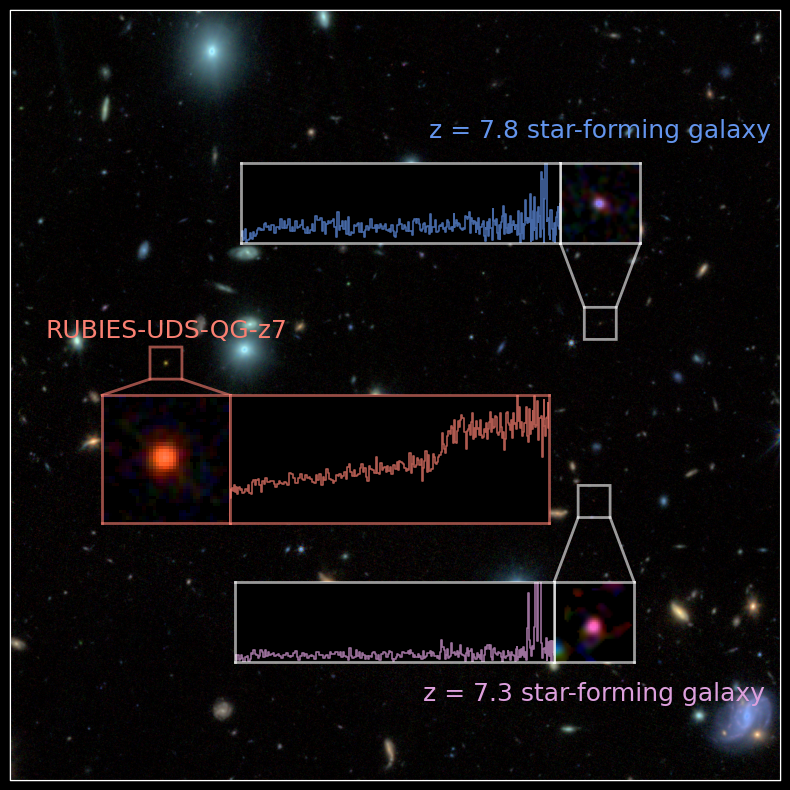
This MQG may stand out from Little Red Dots seen by the JWST in ways other than its rapid death.
"In the JWST images, RUBIES-UDS-QG-z7 resembled objects named Little Red Dots, which have been discovered with the JWST," Weibel said. "Many of these objects turned out to have strong emission lines and/or showed signs of active galactic nuclei (AGN). Thus, at least a good fraction of the light we observe from Little Red Dots may actually originate from accreting supermassive black holes, rather than stars."
However, Weibel added that RUBIES-UDS-QG-z7 shows no signs of an AGN, meaning its light comes entirely from stars, not from the violent conditions around a feeding black hole.
"This then implies its rather high mass and its quiescence, which both came as a big surprise," Weibel continued. "So far, we have only found one such object in all the JWST data that we investigated."
From this, the team calculated that galaxies like RUBIES-UDS-QG-z7 should account for around one in 1 million galaxies.
"This is, however, quite uncertain, because we don't know how lucky we got to find one in the small patch of the sky that we have scanned so far," Weibel said. "With hopefully many more years of JWST taking data, we will be able to search larger areas of the sky and get a better idea of how common galaxies like RUBIES-UGD-QG-z7 actually are."
Performing higher resolution and deeper spectroscopy imaging of this galaxy could reveal the abundances of various elements, which would help better constrain the formation history of RUBIES-UDS-QG-z7.
"We will get more data on this galaxy in the upcoming Cycle 4 of JWST observations. Specifically, higher resolution spectroscopy," Weibel said.
The JWST may need a helping hand to study RUBIES-UDS-QG-z7 from Earth's largest radio telescope project, the Atacama Large Millimeter/submillimeter Array (ALMA), which consists of 66 antennas located in the Atacama Desert region of Northern Chile.
"Data from the ALMA telescope at longer wavelengths of light can give us direct insight into the gas and dust content of the galaxy, which is closely related to its past and future star formation history," Weibel said.
The team's research was published on April 1 in The Astrophysical Journal.
Robert Lea is a science journalist in the U.K. who specializes in science, space, physics, astronomy, astrophysics, cosmology, quantum mechanics and technology. Rob's articles have been published in Physics World, New Scientist, Astronomy Magazine, All About Space and ZME Science. He also writes about science communication for Elsevier and the European Journal of Physics. Rob holds a bachelor of science degree in physics and astronomy from the U.K.’s Open University
You must confirm your public display name before commenting
Please logout and then login again, you will then be prompted to enter your display name.


